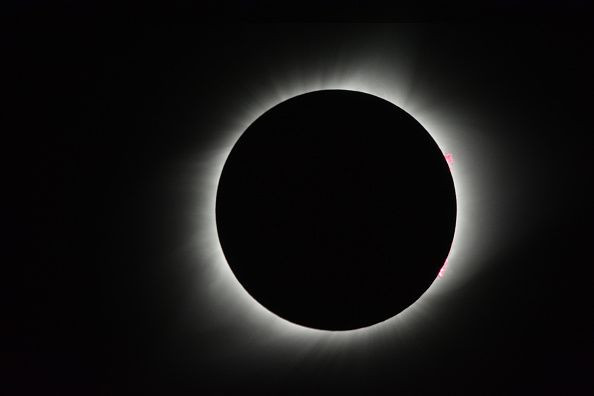People Put Sunscreen On Eyes During Eclipse And It Didn't Go Well

Several people in California received medical care after they put sunscreen in their eyes during Monday’s total solar eclipse, reported ABC-affiliate KRCR Tuesday.
Nurse Practitioner Trish Patterson from Prestige Urgent Care in Redding, California, said none of their patients came in with eye damage from the eclipse, but a few had pain after putting sunscreen on their eyeballs in lieu of protective glasses.
“One of my colleagues at moonlight here stated yesterday that they had patients presenting at their clinic that they put sunscreen on their eyeball, and presented that they were having pain and they were referred to an ophthalmologist,” Patterson said.
Warning labels on sunscreen containers warn to avoid having the substance on the eye. If a person gets sunscreen in their eye, it is advised they run their eye under water while blinking for 15-20 minutes. Afterward, people are encouraged to call Poison Control. Special protective sunglasses were needed to safely view Monday’s solar eclipse. NASA released a list of approved eclipse glasses vendors to ensure people would obtain the correct ones. After the eclipse, Google searches for “my eyes hurt” and “eyes hurt eclipse” increased, according to CNN. Totality —when the moon completely blocked the sun — was the only time safe to look directly up at the sky.
Some signs of eye damage from looking directly at the eclipse include blurred vision, sensitivity to light, spotty vision and difficulty distinguishing color. If someone thinks they have had eye damage from the eclipse, they should immediately make an appointment with an optometrist, said Dr. Christopher Quinn, president of the American Optometric Association.

“At the New York Eye and Ear Infirmary emergency facility, we have already seen dozens of patients with concerns ranging from headaches to subjective blurry vision. While most patients have not had any permanent issues, a few have been found to have some retinal damage, which will require monitoring,” Dr. Avnish Deobhakta, an ophthalmologist at Mount Sinai Hospital said to CNN.
“Sun exposure can cause damage to many structures in the eye,” Deobhakta continued. “While we normally focus on the retinal damage that can happen, in some cases, people can suffer from light sensitivity and pain due to corneal damage.”
Medical experts said it takes about 12 hours to start experiencing symptoms of damage to eyes from the eclipse. Some people experienced pain in their eyes after the eclipse, despite having worn legitimate eclipse sunglasses to view the sun.
“The thing is, if you look for a sustained period through the filter, you’re stimulating only one set of color-sensitive receptors in the back of the eye. So they’ll get more work than, say, the receptors that are responsible for green and blue light,” Ralph Chou, a professor emeritus of optometry and vision science at the University of Waterloo in Ontario, Canada told NPR. “And the result will be that for a brief time, you’ll suffer the same kind of effects that you get from looking at a very bright headlight or flash from a camera.”
© Copyright IBTimes 2024. All rights reserved.





















